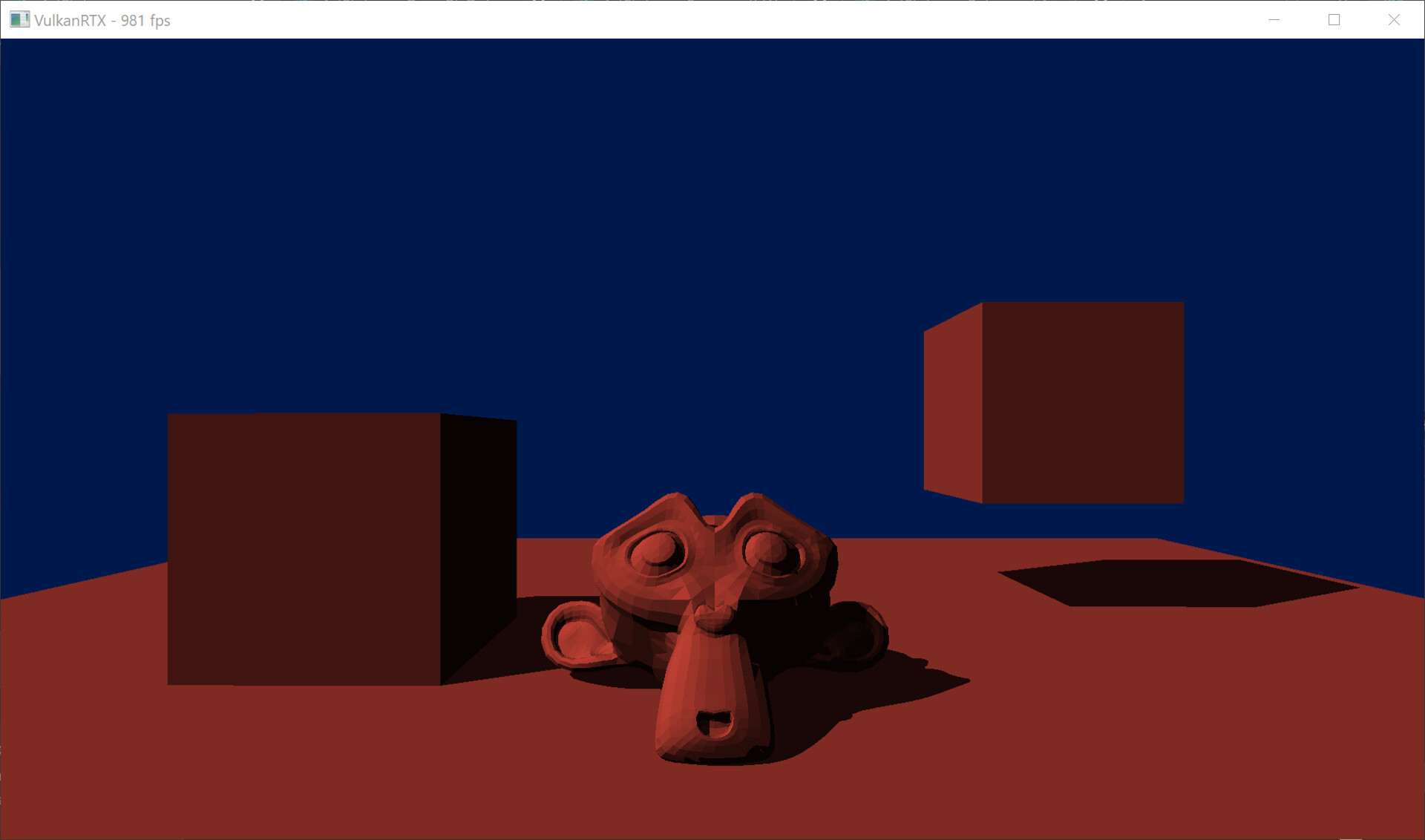Course project for the Rendering course (Computer Science 591 at the University of Calgary) I took in winter 2019 and where I implemented ray tracing that made use of Nvidia’s RTX hardware through the Vulkan API.
Source code is self-hosted on my home Git-Gogs server which is only accessible from my home network.
Project Summary
Objective
Learn the Vulkan basics and implement ray tracing that is accelerated by Nvidia’s RTX hardware.
Justification
- Just seemed like the coolest project idea I could think of that didn’t necessarily require a load of math.
- It was a massive learning opportunity!
- Went in not knowing Vulkan, came out at least knowing the basics.
- This also translated to a better understanding of OpenGL and graphics APIs in general.
- Learned how to implement RTX.
- Got to experiment with RTX before it was supported by everything.
- Self-justification…
- I bought a RTX2080 very shortly after launch and had to somehow justify the early adopter fee.
Features
- Normal Vulkan rasterization with z-fighting.
- This wasn’t the main objective so I didn’t care enough to fix it.
- Ray tracing using RTX in Vulkan.
- Unfortunately only got direct lighting and simple shadows implemented.
- Expected window options supported like resizing or minimizing the window are supported.
- Can switch between rasterized and ray traced views.
- User specified camera movement with the ability to unlock the mouse so you can take screenshots or resize the window.
Challenges
- Learning Vulkan and how to implement RTX at the same time.
Screenshots
Ray Tracing
Final version

.png)
WIP renders
.png)
.png)
.png)
Rasterization

.png)
.png)
.png)
.png)
Videos
Ray Tracing
Rasterization
Credits
Vulkan Resources
- Alexander Overvoorde’s Vulkan-Tutorial.
- Sascha Willems’s Vulkan Examples and Demos.
- Vulkan API and Documentation.
RTX Resources
- Martin-Karl Lefrançois and Pascal Gautron’s Vulkan RTX Tutorial on Nvidia’s blog.
- Sergii Kudlai’s Vulkan RTX Tutorial.
General Credits
- The event system, logger, and window startup are all based on early versions of Yan Chernikov’s Hazel game engine since I was following his game engine series around the time of this project.